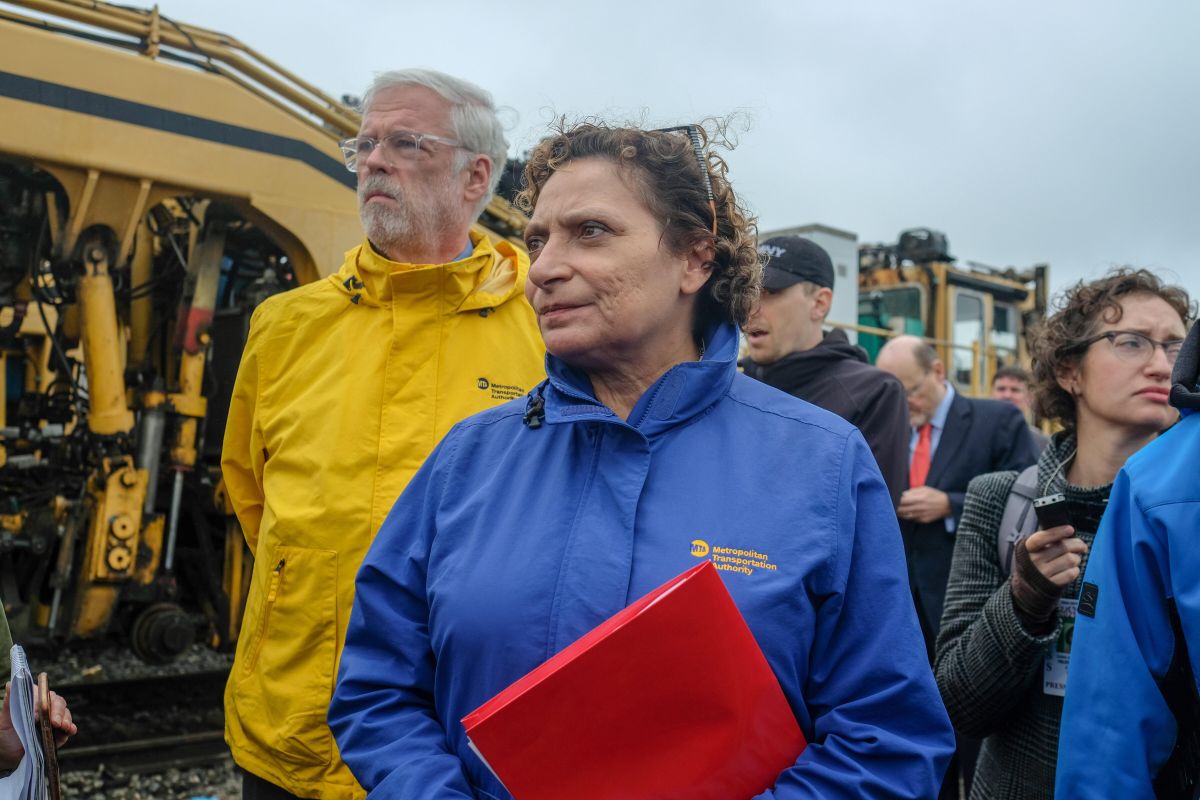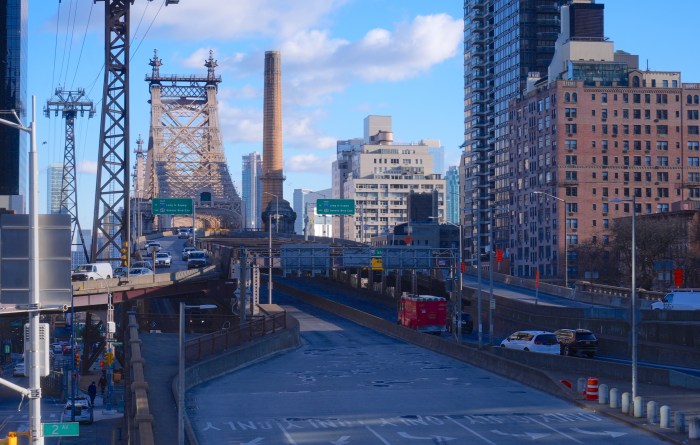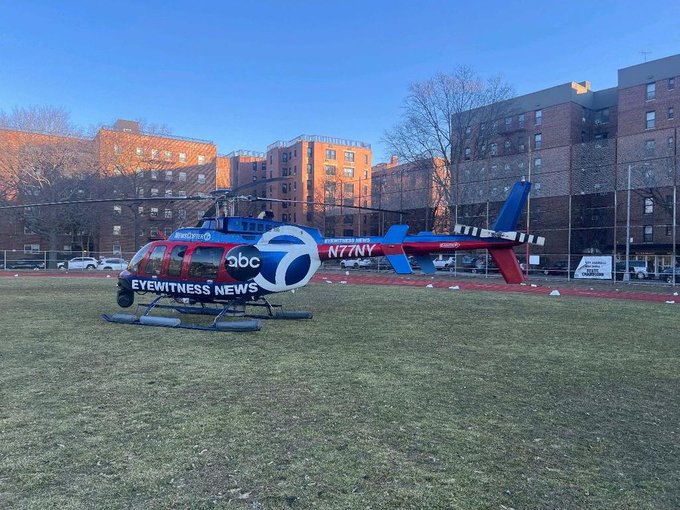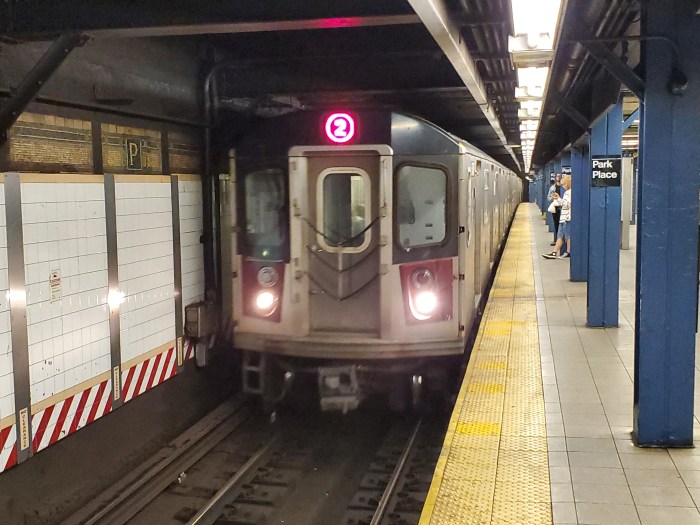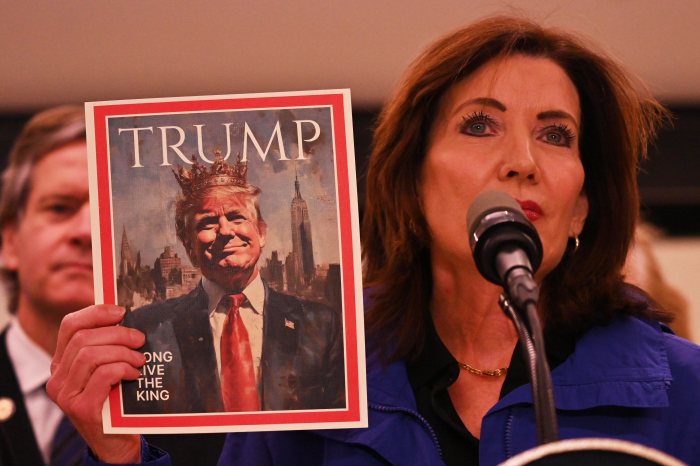Seven years after Superstorm Sandy ravaged the region, the MTA is still in the process of preparing for a similar storm.
The transit authority has spent billions to restore and fortify its infrastructure and has promised to incorporate resiliency in every project it undertakes — but officials Tuesday stopped short of declaring the agency was “fully” prepared for another Sandy.
“The answer is: much better prepared,” said MTA Chairman and CEO Pat Foye during a tour of an ongoing resiliency project at the vulnerable Coney Island Yard, which the MTA described as the world’s largest rail yard and a critical hub for the agency’s lettered lines.
The climate crisis, as outlined by a United Nations report last year, means that without fundamental societal shifts the planet’s atmosphere will warm by 1.5 degrees Celsius above preindustrial levels by 2040, bringing more flooding, fires and droughts.
Foye acknowledged the reality of climate change ushering in increasingly intense weather bears down on an agency with so much waterfront and flood-prone infrastructure above and below ground.
“I think it’s fair to say, as you look across climate change events in the country and the world, they’re becoming more frequent and extreme — whether it’s fires in California, whether its water shortages across the globe — this is a continues effort,” he continued.
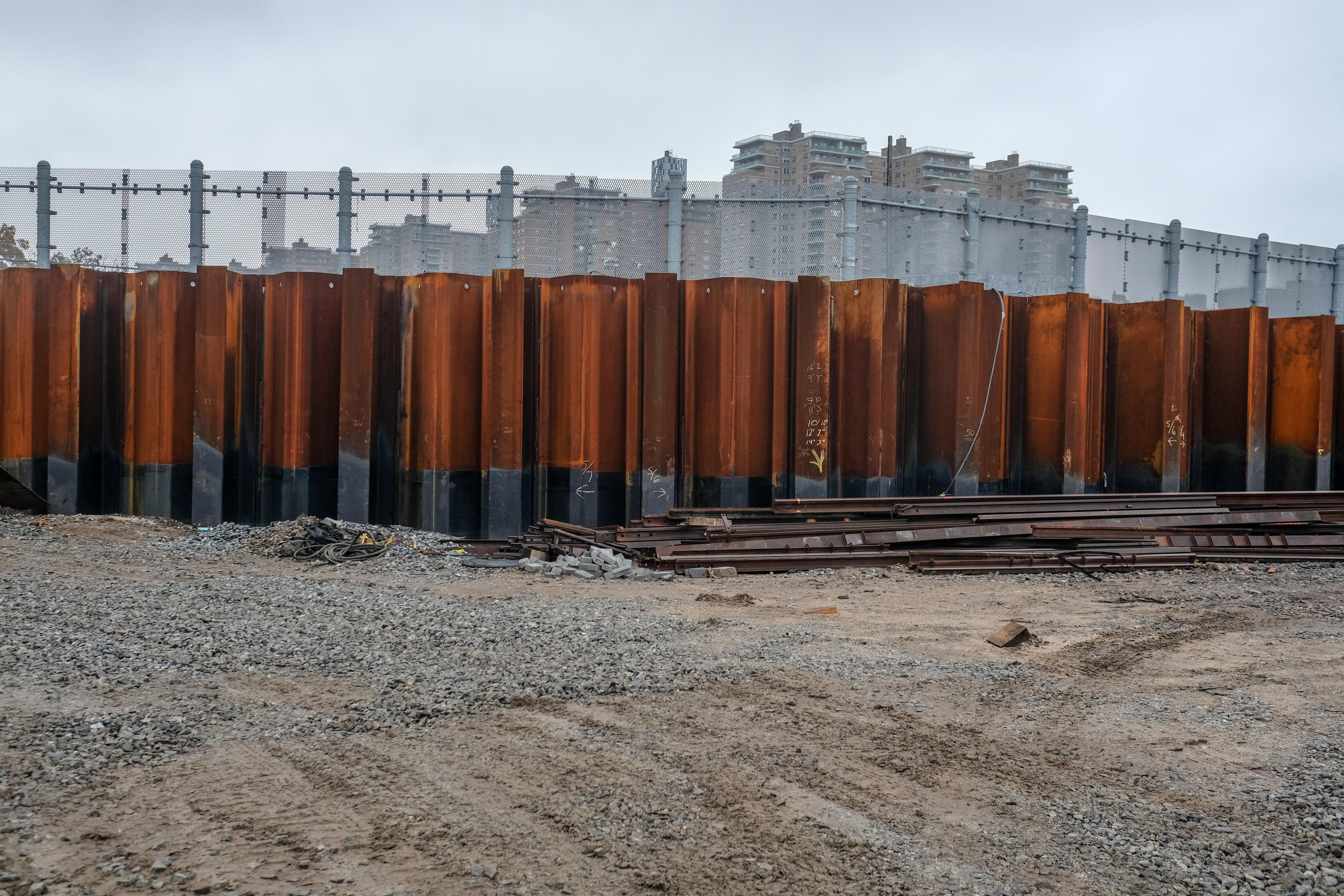
Sustaining mass transit, making it more reliable and attractive, is a key priority to fight climate change. The MTA’s operations contribute a net reduction of 17 million metric tons of greenhouse gas emissions per year, according to the authority.
Advocates are pushing the MTA to do more to reduce emissions by sticking to its commitment under Transit President Andy Byford to move to an all-electric bus fleet by 2040. MTA bus fleet is the largest in the country and contributes approximately 577,290 metric tons of greenhouse gas each year, according to the alliance.
“From the environmental justice perspective, climate change is absolutely the most existential threat that many of our communities face and our transportation infrastructure is definitely on the forefront of our minds,” said Renae Reynolds of the New York City Environmental Justice Alliance.
“If we stick to the status quo we’re definitely in for it in a few years,” she added. “We need to challenge agencies to make the investments and make tough decisions.”
At the Coney Island Yard, where the MTA stores and services 881 trains running on six subway lines, the MTA is in the process of installing 12,000 linear feet of floodwall and is building a new elevated cable bridge to keep critical track power lines high above ground, away from potential floodwater spilling out of the nearby creek. All of the repairs there are slated to be completed in early 2022.
“This is a new approach for us,” said Ronnie Hakim, the MTA’s outgoing managing director, during a tour of the yard. “Normally we would be burying cables but instead we’re protecting them by now suspending them on this bridge structure in order to better inspect them, maintain them, as well as provide a safe walkway for our employees.”
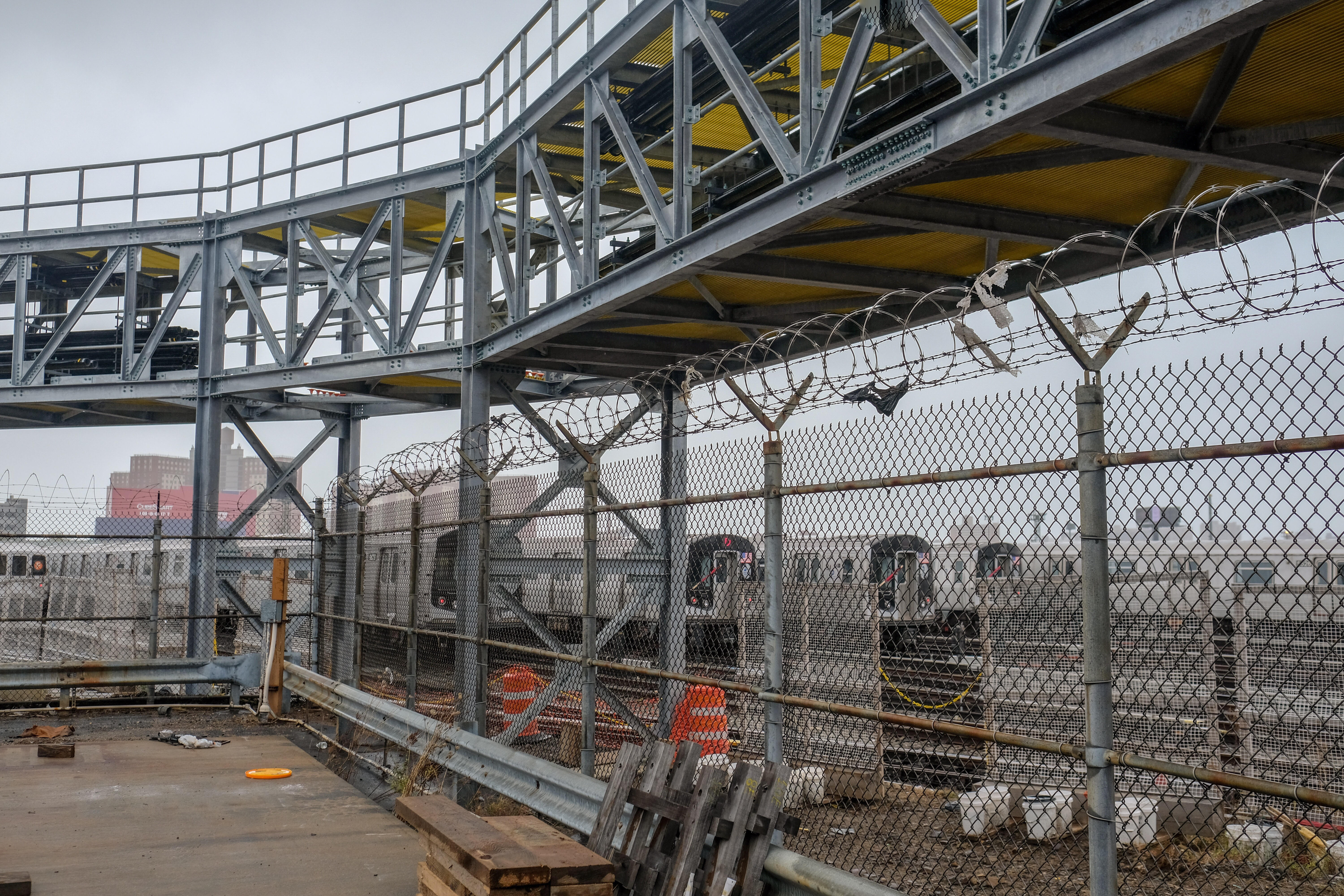
Coney Island is one of four subway yards that was badly damaged during Sandy. The MTA is still repairing two others as well, at 207th Street and 148th Street.
In the subways themselves, the MTA is currently undergoing controversial repairs to the Sandy-damaged Canarsie tunnel, with one of the nine damaged tunnels left for repairs: the Rutgers tube of the F line.
MTA officials were tight-lipped Tuesday on what those repairs would look like, when they would start and to what extent service would have to be disrupted for their accommodations.
But the Rutgers tube faired better during the storm. Sandy flooded the tunnel with 1.5 million gallons of saltwater, according to MTA documents. The Canarsie tube, by comparison, was filled with 7 million gallons of water. The Montague tunnel of the R line was hit with 27 million gallons.
“Lessons of the L train and frankly other projects will be incorporated into the Rutgers tunnel restoration when that work begins,” Foye said.



